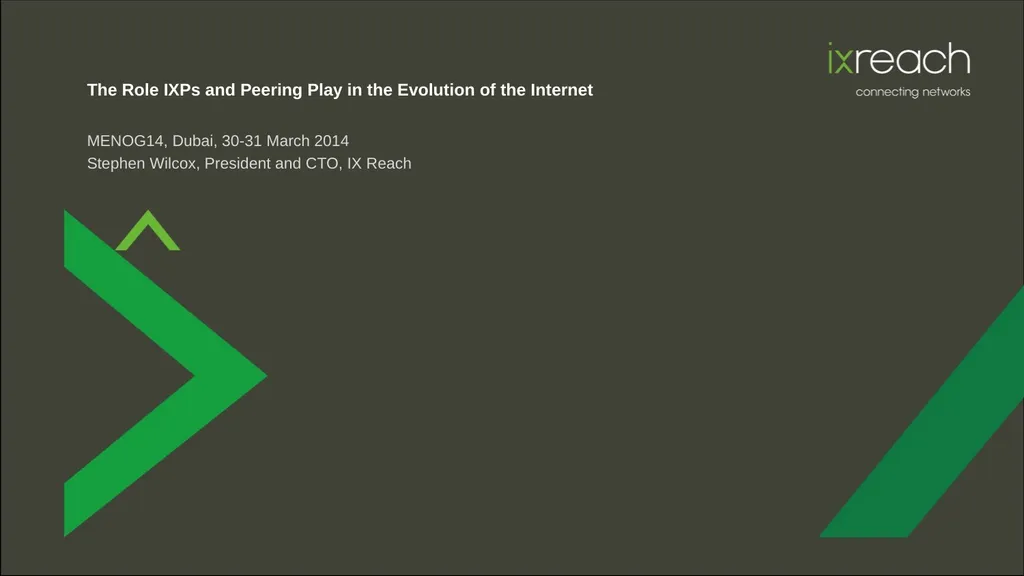
Author : tatiana-dople | Published Date : 2025-06-27
Description: The Role IXPs and Peering Play in the Evolution of the Internet MENOG14, Dubai, 30-31 March 2014 Stephen Wilcox, President and CTO, IX Reach A Quick Introduction Stephen Wilcox founded IX Reach in 2007, President and CTO Global leadingDownload Presentation The PPT/PDF document "" is the property of its rightful owner. Permission is granted to download and print the materials on this website for personal, non-commercial use only, and to display it on your personal computer provided you do not modify the materials and that you retain all copyright notices contained in the materials. By downloading content from our website, you accept the terms of this agreement.
Here is the link to download the presentation.
"The Role IXPs and Peering Play in the Evolution of"The content belongs to its owner. You may download and print it for personal use, without modification, and keep all copyright notices. By downloading, you agree to these terms.













